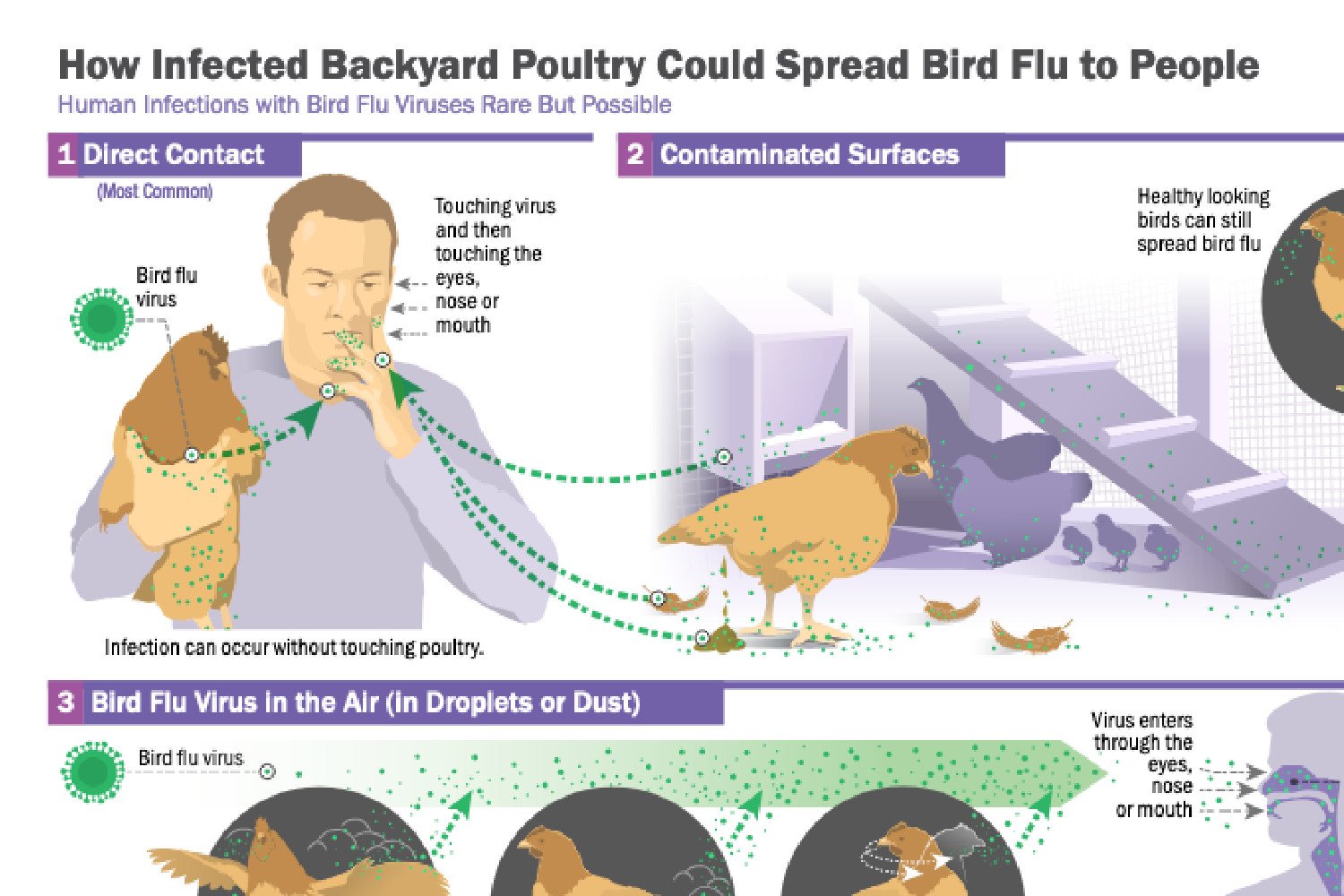The Centers for Disease Control and Prevention (CDC) announced the first severe case of H5N1 avian influenza (bird flu) in the United States on Wednesday, December 18, 2024. While the individual appears to have contracted the virus from backyard poultry, eliminating immediate concerns about human-to-human transmission, the continued rise of human bird flu cases raises concerns.
The Louisiana case, confirmed on December 13, 2024, involves the D1.1 genotype, linked to previous human cases in Washington state and British Columbia, Canada. This genotype differs from the B3.13 genotype prevalent in U.S. dairy cows, the primary source of human infection. California, experiencing the most dairy herd infections (645), declared a state of emergency on the same day.
Understanding the Transmission of H5N1 Bird Flu
While the Louisiana case originated from backyard poultry, most human infections stem from exposure to commercial poultry among farm workers. Uncertain infection routes exist in cases from Missouri and California, where no known farm animal contact occurred. Wastewater detection of the virus in states like Florida, Maine, and New Jersey, without identified infected birds or cattle, adds to the complexity.
Details regarding the Louisiana case, including infection timeline and symptoms, remain limited, with the CDC only confirming flu-like symptoms. The agency’s online bird flu tracker details confirmed human cases, affected states, and suspected animal sources, currently totaling 61 cases across eight states. A suspected case in Delaware, pending confirmation, could make it the ninth affected state, particularly given recent wastewater detection there.
Concerns Regarding Raw Milk and H5N1 Transmission
While human bird flu infection through milk or beef consumption remains unreported in the U.S., the possibility raises concerns. Pasteurization eliminates the virus in milk, but studies show its survival in raw milk for up to five days. The appointment of Robert F. Kennedy Jr., a raw milk advocate, as head of the U.S. Department of Health and Human Services, adds another layer of complexity. Recent deaths of cats in California potentially linked to bird flu after consuming raw milk further highlight this concern.
Assessing the Overall Risk
Despite the severe Louisiana case, the CDC maintains that the overall risk to the U.S. public remains low. The agency emphasizes the sporadic nature of the case and the absence of documented person-to-person spread. While acknowledging the severity of H5N1 bird flu illness observed in other countries, the CDC reiterates its low-risk assessment.
Current Status and Future Outlook
The CDC is continuously monitoring the situation and working with state and local health departments to investigate cases and implement preventative measures. Continued surveillance, including wastewater testing and animal monitoring, is crucial in understanding and mitigating the spread of H5N1 bird flu.
While the current situation does not warrant widespread alarm, staying informed and following recommended precautions, such as avoiding contact with sick or dead birds, is essential. The evolving nature of the virus underscores the need for ongoing vigilance and research to effectively address potential future challenges.
The emergence of this severe case highlights the importance of continued monitoring, research, and public health measures to effectively combat the spread of H5N1 bird flu and protect public health.











